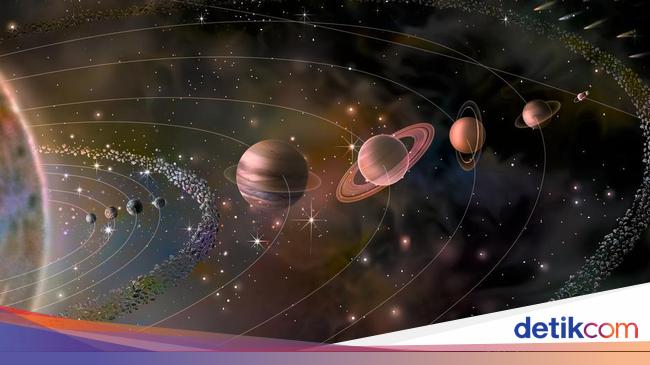Jakarta –
As we already know, the Solar System consists of 8 planets that revolve around the Sun. In the Solar System there are also satellites of each planet, asteroids, the dwarf planet Pluto, and various interstellar dust. But have you ever thought, where is the end of this vast Solar System?
At a distance of 4.5 billion km from the Sun, Neptune is the outermost planet in the Solar System. It’s not easy to measure distances in space, but astronomers have determined that beyond Neptune there is a ring of icy objects left over from the formation of the Solar System. Quoted from the NASA page, this ring is known as the Kuiper Belt.
Outer Edge of the Heliosphere, Edge of the Solar System?
The Kuiper Belt stretches between 30 and 50 AU (Astronomical Units). 1 AU is the distance between the Earth and the Sun.
Beyond Neptune is the Kuiper Belt which consists of ice dwarf planets (including Pluto) and the Oort Cloud which consists of comet nuclei. The distance can reach almost half that of the nearest star.
The Oort cloud is made of icy pieces of space debris that are the size of mountains and sometimes even larger. The Oort Cloud is where some comets originate.
Unlike the orbits of the planets and the Kuiper belt which are quite flat like disks, the Oort cloud is a giant spherical shell that surrounds the Sun, planets and objects in the Kuiper belt.
The Solar System does not have clear boundaries. But in general, the outer edge of the heliosphere (the Sun’s magnetic field of influence) is considered the boundary of the Solar System. Objects in the Kuiper Belt and Oort Cloud still orbit the Sun, although very slowly.
Fly to the Edge of the Solar System
So far, NASA’s Voyager 1 is the only space probe that has ventured beyond the outer limits of the Solar System. This area is known as the heliopause, which is the boundary between the solar wind and the interstellar wind (interstellar space).
This journey led NASA’s Voyager 1 to enter true interstellar space. The Voyager 1 spacecraft took 35 years to leave the heliosphere.
This vehicle travels one million miles (1.6 million km) every day. It takes about 300 years to reach the inner layers of the Oort Cloud. Then it would take 30,000 years to go through everything. That’s an illustration of how vast our Solar System is.
Watch the video “The reason outer space is dark even though there is the sun”
(two/two)
2024-04-12 13:00:00
#Edge #Solar #System #Heres #explanation

